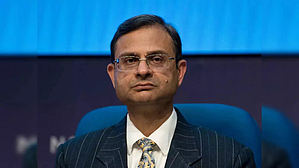Business
RBI holds repo rate at 5.5 pc, eases prudential norms, confirms UPI will stay free
RBI governor Sanjay Malhotra cautioned that global headwinds and recent US tariffs of up to 50 per cent on Indian exports could dampen external demand

The Reserve Bank of India’s Monetary Policy Committee (MPC) on 1 October, Wednesday, left the benchmark repo rate unchanged at 5.5 per cent with a neutral stance, marking its second consecutive pause after three rate cuts earlier this year. The decision was unanimous and announced by governor Sanjay Malhotra as the central bank unveiled its fourth bi-monthly policy review of FY26.
While keeping borrowing costs steady, the RBI moved to support credit growth through prudential easing, which involves relaxing regulatory norms that govern how much capital banks must set aside for lending. The measures include lowering risk weights and easing liquidity coverage requirements, which will enable banks to lend more freely to businesses and households.
Malhotra stressed that this step was meant to balance financial stability with growth. “No rate cut does not mean no support,” he said, signalling that the central bank remains growth-friendly even as it awaits the cumulative impact of its earlier rate reductions.
Published: undefined
Inflation and growth outlook
The RBI sharply lowered its inflation forecast for FY26 to 2.6 per cent from 3.1 per cent earlier, citing the impact of GST rate cuts, easing food prices and comfortable foodgrain stocks. Quarterly projections put retail inflation at 1.8 per cent for both Q2 and Q3, rising to 4.0 per cent in Q4, before edging up to 4.5 per cent in Q1 FY27.
At the same time, the central bank raised its GDP growth forecast for the year to 6.8 per cent from 6.5 per cent, citing robust consumption and investment.
Published: undefined
However, Malhotra cautioned that global headwinds and recently imposed US tariffs of up to 50 per cent on Indian exports could dampen external demand.
Rupee, liquidity and financial stability
Malhotra noted that the RBI continues to closely monitor currency volatility. Net FDI inflows touched a 38-month high in July, even as FPIs registered outflows of USD 3.9 billion so far in FY26. Forex reserves remain strong at USD 700.2 billion, equivalent to more than 11 months of import cover.
System liquidity averaged a daily surplus of Rs 2.1 lakh crore since August, and further easing is expected as the remaining 75 bps CRR cut takes effect. Banks and NBFCs remain on strong footing, with system-wide capital adequacy ratios well above regulatory requirements and gross NPAs continuing to decline.
Published: undefined
UPI to stay free of charges
In one of the key policy highlights, governor Malhotra reaffirmed that the Unified Payments Interface (UPI) will remain free of charges for both users and merchants. “UPI has been a powerful enabler of digital adoption in India, and we remain committed to keeping it zero-cost,” he said.
The statement helped lift digital payments stocks, with Paytm (One 97 Communications) gaining over 2 per cent in afternoon trading to Rs 1,147 on the NSE.
Published: undefined
Malhotra’s remarks come amid renewed debate over the sustainability of the zero-charge model. While acknowledging that UPI transactions carry operational costs, he clarified that no changes are being introduced at present.
Additional measures
The RBI also announced 22 regulatory steps, including a glide path for implementing the Expected Credit Loss framework and revised Basel III norms from April 2027, easing infrastructure financing norms for NBFCs, expanding the Ombudsman framework, and steps to advance the internationalisation of the rupee.
The big picture
By holding rates steady, easing prudential norms, and reiterating its support for UPI, the RBI has struck a balance between stability and growth. Lower inflation has created room for policy flexibility, but global trade uncertainties continue to pose risks.
Published: undefined
Follow us on: Facebook, Twitter, Google News, Instagram
Join our official telegram channel (@nationalherald) and stay updated with the latest headlines
Published: undefined